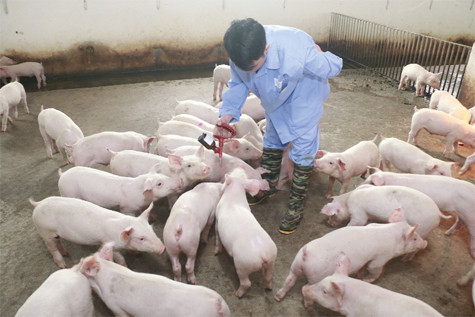General Introduction to the Veterinary Industry at Intermediate Level
On December 28, 2018, Circular 52/2018/TT-BLDTBXH was issued by BLDTBXH stipulating the minimum amount of knowledge and the competency requirements that learners must achieve after graduating from intermediate and college levels in the fields of agriculture, forestry, fishery, and veterinary medicine.

General Introduction to the Intermediate-level Veterinary Medicine Sector - Illustrative Image
According to the Regulations on the Minimum Knowledge Volume, Competency Requirements that Learners Must Achieve After Graduating from Intermediate-Level and College-Level Veterinary Medicine Sectors, issued along with Circular 52/2018/TT-BLDTBXH, the intermediate-level veterinary medicine sector is defined as a profession involved in the fields of diagnostics, treatment, disease prevention, and technical guidance to protect animal health and prevent outbreaks, contributing to the efficiency of livestock farming and providing society with safe products, meeting Level 4 requirements in the Vietnam National Qualifications Framework.
Veterinary practitioners are capable of diagnostics, treatment, disease prevention, and technical guidance in veterinary medicine; engaging in veterinary livestock business production; constructing, managing, and operating livestock farms, and executing other tasks related to the veterinary field.
Graduates may work in farms, livestock breeding enterprises, veterinary medicine, animal feed production; veterinary medicine business, veterinary clinics, agricultural service centers, research and technology transfer institutions in livestock and veterinary medicine; state management agencies, administrative institutions, and other organizations related to veterinary medicine.
The minimum knowledge volume is 1530 hours (equivalent to 55 credits).
For detailed regulations, see Circular 52/2018/TT-BLDTBXH, effective from February 10, 2019.
Le Vy
- Ministry of Health of Vietnam issues Inspection Plan for 2025
- Vietnam: Classification of motor vehicles by purpose of use from January 1, 2025
- Assignment of duties of police officers commanding, directing traffic on road traffic routes in Vietnam in 2025
- Proactively strengthen the prevention and control of Diphtheria in Vietnam according to Official Dispatch 1285
- Continue to strengthen state management of e-commerce in Vietnam
- Information about patients in the medical examination and treatment management information system in Vietnam from January 1, 2027
-

- Notable documents of Vietnam in the previous week ...
- 17:22, 26/11/2024
-

- Ministry of Health of Vietnam issues Inspection ...
- 15:34, 26/11/2024
-

- Steps for data cleansing to issue organizational ...
- 15:23, 26/11/2024
-

- Vietnam: Classification of motor vehicles by purpose ...
- 14:59, 26/11/2024
-

- Assignment of duties of police officers commanding ...
- 14:30, 26/11/2024
 Article table of contents
Article table of contents
